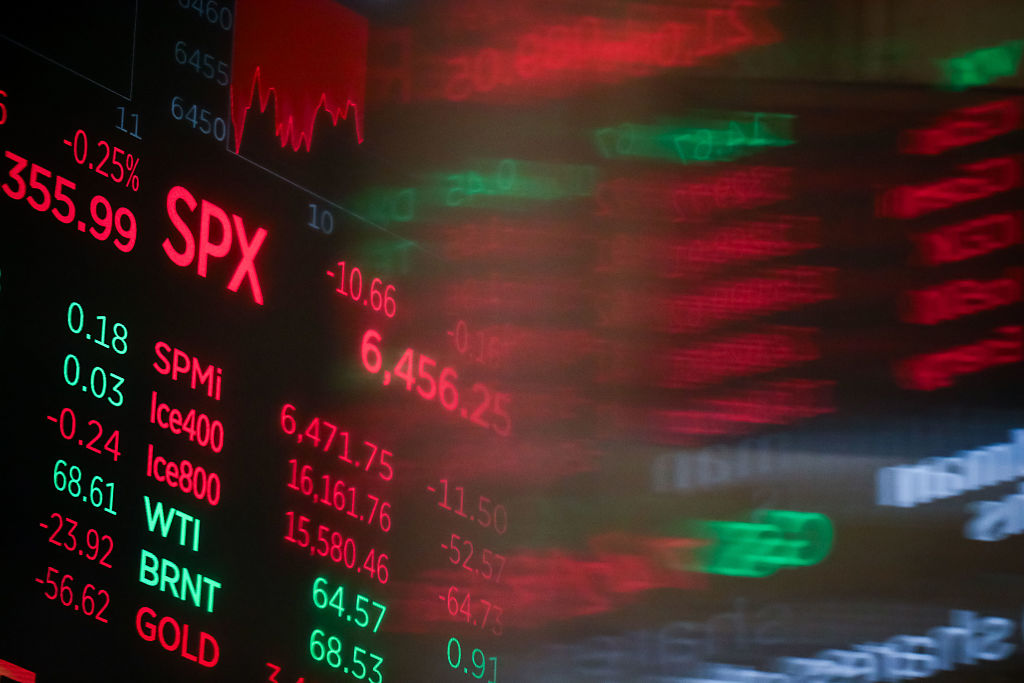Great Companies on Sale
There are high-quality, growing businesses trading at value-stock prices. What more could you want?

Are growth stocks dead? It sure seems that way. Between the end of 1999 and the beginning of September, a $10,000 investment in Vanguard Value Index fund grew to $13,396.But the same amount of money inside a companion fund, Vanguard Growth Index, shrank to $7,344. In fact, the stocks of large, undervalued companies whipped their growth-stock counterparts in each of the past seven years -- including this one, so far. You have to wonder how long this will continue.
Best over time
Growth stocks are defined in two ways. First, they are shares in companies that are rapidly increasing their sales and earnings. Second, they are shares that carry high valuations -- especially in terms of price-to-book-value (P/B) and price-earnings (P/E) ratios. These definitions generally fit the same universe of stocks. Many investors will pay a premium -- more dollars for each dollar of a company's net worth or profits -- for fast growers, and with good reason. For example, according to Value Line Investment Survey, in 1998 Microsoft traded at a P/E of 43. Its high valuation was easily justified. Earnings per share rose by 56% over the year, and the stock price more than doubled. Can you find a stock whose profits are growing at 56% but whose P/E is in the teens? Not likely.
Research firms that gather data, including SP/Barra, Russell, MSCI and Ibbotson Associates, use share valuations (especially P/B ratios), rather than earnings growth or return on equity, to assign stocks to the growth and value universes. By those measures, value stocks rule. Ibbotson reports, for example, that between 1969 and 2005, the average large-cap growth stock returned 9.3%, including dividends, and the average value stock returned 11%. Since the 1920s, value stocks have whipped growth in seven decades and were beaten in only two.
From just $107.88 $24.99 for Kiplinger Personal Finance
Become a smarter, better informed investor. Subscribe from just $107.88 $24.99, plus get up to 4 Special Issues

Sign up for Kiplinger’s Free Newsletters
Profit and prosper with the best of expert advice on investing, taxes, retirement, personal finance and more - straight to your e-mail.
Profit and prosper with the best of expert advice - straight to your e-mail.
Value stocks may be a better bet, but styles in stocks run in cycles. What's unusual about the current value cycle is how long it has lasted. The most popular explanation is that growth stocks dominated the 1990s so completely that value stocks are taking a long time to catch up. Seven years ago, in fact, many analysts were saying that value stocks were dead. Arlene Rockefeller, of State Street Global Advisors, wrote in mid 2000 that "the end of value investing has been heralded almost daily," but she counseled patience for value lovers -- good advice, as it turned out.
Large-cap growth beat value in seven of the 11 years ending in 1999, and growth's 31-point advantage in 1998, wrote Rockefeller, was the widest ever. The 1990s, of course, were years when the world wanted to own tech stocks, which were characterized by minuscule but quickly rising earnings. When the tech bubble collapsed, investors (so the reasoning goes) turned to value with a vengeance -- and stayed there.
Fluky period
I find this argument unconvincing. There must be a better explanation for the recent persistence of value stocks. What about chance? Roger Hertog, vice-chairman of AllianceBernstein Corp. and a former securities analyst, says we have been living in "a fluky period." Traditional value categories, such as energy and commodities, have boomed, as a confluence of geopolitical uncertainty, rising demand in Asia and constraints on supply push prices up. "If you were a value investor, you got a second wind," agrees Richard Skeppstrom, co-manager of Heritage Core Equity fund, whose prospectus lets it graze in either the value or the growth field. "Energy miraculously took off for you." Just as fluky, one of the most consistent growth-stock sectors, pharmaceuticals, fell on tough times.
And that may be the crux of the matter. Analysts at AllianceBernstein compared the valuation -- using P/E, price-to-sales and price-to-cash-flow ratios -- of the Russell Growth index to the SP 500. From the mid 1980s to the late 1990s, growth stocks were more than 50% costlier than the market as a whole.
Today, growth stocks are barely 10% more expensive. Growth stocks' "long-term premium is well below average," write the analysts. "These conditions won't last forever."
The price seems right
Skeppstrom says that growth has been shunned to such a degree that fast-growing companies with high returns on equity are trading at roughly the same valuations as the laggards are. "If you have a choice, at the same price, of putting together a portfolio of higher-earnings-growth companies or lower-earnings-growth companies, you would go for the former."
That is precisely what Skeppstrom's fund has done. Heritage Core's portfolio looks like a list of the greatest large-company growth hits of 1999. As of mid 2006, the fund's top four holdings were, in order, Oracle (symbol COGN), Microsoft (MSFT), Pfizer (PFE) and Tyco International (TYC). Also on the list are tech stocks such as Nokia (NOK) and EMC (EMC), plus classic growers Coca-Cola (KO), General Electric (GE), Time Warner (TWX) and United Technologies (UTX).
All of these stocks appear to me to be worth a close look, and the general proposition that growth stocks are poised for a comeback is compelling. Based on the average analyst estimate of next year's earnings, Microsoft trades at a P/E of 16; Nokia, 13; Tyco, 13; and United Technologies, 16. "What's showing up in the value category today are Cisco-like stocks," says Hertog. Cisco Systems (CSCO) itself trades at a forward P/E of 15. That's a rock-bottom number for a stock that, according to Value Line, has historically carried a valuation 65% greater than the market as a whole, possesses a sound balance sheet and is projected to increase its earnings at an average annual rate of at least 15% for the next three to five years (compared with 13% over the past five).
But although growth stocks look cheap today compared with value stocks, growth looked cheap last year, too -- and the year before that. Is it possible that growth is over for good? Certainly, it's hard to find stocks that increase their earnings year after year at 10% or more, as if they were set on automatic pilot. Examples abound of companies that used to perform like that but don't anymore. Look at Automatic Data Processing, whose profits fell in 2003 after rising at a double-digit pace for 41 straight years. Or GE, whose earnings grew a total of just 5% between 2002 and 2004.
Consistent growth may be a chimera
AllianceBernstein's study of a diverse group of growth stocks found that between 1984 and 2000, only 13% were able to sustain earnings increases of at least 10% for even three consecutive years. "The rule of thumb is that all companies -- good and bad -- tend toward mediocrity over time," conclude the researchers. Lately, the situation may be worsening. Globalization has opened new markets, but it has also deprived many growth companies of pricing power, as competitors have figured out how to bridge moats and storm castles.
Looking abroad
Perhaps the future of growth isn't in the U.S. at all. Searching for super growers, I used the Morningstar screening tool to find large caps that exceeded an annual average of 20% in three areas: revenue growth for the past three years, predicted earnings growth for the next five years and return on equity. I found 18 stocks. Ten of them were foreign-based, including four headquartered in India: Tata Motors (TTM), Infosys Technologies (INFY), Wipro (WIT) and Satyam Computer Services (SAY).
I would not, however, give up on the domestic offerings. There are loads of high-quality, growing businesses out there with pristine balance sheets trading at value-stock prices. What more could you want? Skeppstrom ticks off the juicy sectors: "Big-cap tech, pharma, media, even big-cap retail."
The easiest way to buy these stocks is through an index fund, such as Vanguard Growth Index (VIGRX), or a managed fund that has had success even in tough times. I looked for no-load growth funds that had beaten the SP 500's total return for the past one, three and five years to September 1, and whose managers have at least three years' tenure. One all-star fund that passes this test is Meridian Growth (MERDX), run by founder Richard Aster for the past 22 years.
Growth stocks aren't dead. They're just resting. I have no idea if they'll wake up in a week or a year, or even two or three. But does it matter? If you can buy good companies cheap, do it now.
James K. Glassman is a fellow at the American Enterprise Institute and editor in chief of its new magazine, The American. Of the stocks mentioned in this article, he owns General Electric.
Profit and prosper with the best of Kiplinger's advice on investing, taxes, retirement, personal finance and much more. Delivered daily. Enter your email in the box and click Sign Me Up.

-
 Dow Hits New High Then Falls 466 Points: Stock Market Today
Dow Hits New High Then Falls 466 Points: Stock Market TodayThe Nasdaq Composite, with a little help from tech's friends, rises to within 300 points of its own new all-time high.
-
 The Best Vanguard Bond Funds to Buy
The Best Vanguard Bond Funds to BuyInvestors seeking the best Vanguard bond funds can pick between mutual funds and ETFs spanning maturities, credit qualities, tax treatment and geographies.
-
 Are You Afraid of an IRS Audit? 8 Ways to Beat Tax Audit Anxiety
Are You Afraid of an IRS Audit? 8 Ways to Beat Tax Audit AnxietyTax Season Tax audit anxiety is like a wild beast. Here’s how you can help tame it.
-
 What the Rich Know About Investing That You Don't
What the Rich Know About Investing That You Don'tPeople like Warren Buffett become people like Warren Buffett by following basic rules and being disciplined. Here's how to accumulate real wealth.
-
 How to Invest for Rising Data Integrity Risk
How to Invest for Rising Data Integrity RiskAmid a broad assault on venerable institutions, President Trump has targeted agencies responsible for data critical to markets. How should investors respond?
-
 What Tariffs Mean for Your Sector Exposure
What Tariffs Mean for Your Sector ExposureNew, higher and changing tariffs will ripple through the economy and into share prices for many quarters to come.
-
 How to Invest for Fall Rate Cuts by the Fed
How to Invest for Fall Rate Cuts by the FedThe probability the Fed cuts interest rates by 25 basis points in October is now greater than 90%.
-
 Are Buffett and Berkshire About to Bail on Kraft Heinz Stock?
Are Buffett and Berkshire About to Bail on Kraft Heinz Stock?Warren Buffett and Berkshire Hathaway own a lot of Kraft Heinz stock, so what happens when they decide to sell KHC?
-
 How the Stock Market Performed in the First 6 Months of Trump's Second Term
How the Stock Market Performed in the First 6 Months of Trump's Second TermSix months after President Donald Trump's inauguration, take a look at how the stock market has performed.
-
 Fed Leaves Rates Unchanged: What the Experts Are Saying
Fed Leaves Rates Unchanged: What the Experts Are SayingFederal Reserve As widely expected, the Federal Open Market Committee took a 'wait-and-see' approach toward borrowing costs.
-
 Fed Sees Fewer Rate Cuts in 2025: What the Experts Are Saying
Fed Sees Fewer Rate Cuts in 2025: What the Experts Are SayingFederal Reserve The Federal Reserve cut interest rates as expected, but the future path of borrowing costs became more opaque.